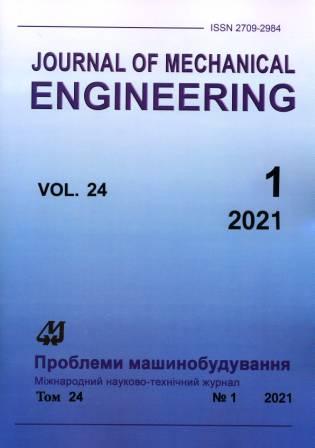Integral Criterion of the Non-uniformity of Stress Distribution for the Topology Optimization of 2D-Models
Abstract
The emergence of new technologies for the production of structural elements gives impetus to the development of new technologies for their design, in particular with the involvement of a topology optimization method. The most common algorithm for designing topologically optimal structures is focused on reducing their elastic flexibility at a given volume of material. However, a closer to the engineering design approach is the minimization of the volume of a structural element while limiting the resulting mechanical stresses. In contrast to the classical algorithms of this approach, which limit the values of stresses at certain points, this paper develops an alternative criterion: the formation of the image of a structural element is based on minimizing the integral parameter of stress distribution non-uniformity. The developed algorithm is based on the method of proportional topology optimization, and when mechanical stresses are calculated, the classical relations of the finite element method are used. The above parameter can be interpreted as the ratio of the deviation of the values, ordered in ascending order, of equivalent von Mises stresses in the finite elements of a calculation model from their linear approximation to the corresponding mean value. The search for the optimal result is carried out for the full range of possible values of the averaged "density" of the calculation area, which is associated with a decrease in the amount of input data. The proposed integrated strength criterion provides better uniformity of the optimized topology, allows us to smooth the effect of the local peak values of mechanical stresses, determining a single optimization result that is resistant to calculation errors. The algorithm is implemented in the MatLab software environment for two-dimensional models. The efficiency of the approach is tested on the optimization of a classical beam (mbb-beam), a cantilever beam, and an L-shaped beam. A comparative analysis of the obtained results with those available in the literature is given. It is shown that in the absence of constraint on the average value of the density of a finite element model, the proposed criterion gives a ″less dense″ optimization result compared to the classical one (approximately 40%), while the values of "contrast index" are quite close.
Downloads
Published
Issue
Section
License
Copyright (c) 2021 И. В. Янчевский, В. Ф. Крышталь

This work is licensed under a Creative Commons Attribution-NoDerivatives 4.0 International License.
All authors agree with the following conditions:
- The authors reserve the right to claim authorship of their work and transfer to the journal the right of first publication of the work under the license agreement (the agreement).
- Authors have a right to conclude independently additional agreement on non-exclusive spreading the work in the form in which it was published by the jpurnal (for example, to place the work in institution repository or to publish as a part of a monograph), providing a link to the first publication of the work in this journal.
- Journal policy allows authors to place the manuscript in the Internet (for example, in the institution repository or on a personal web sites) both before its submission to the editorial board and during its editorial processing, as this ensures the productive scientific discussion and impact positively on the efficiency and dynamics of citation of published work (see The Effect of Open Access).

